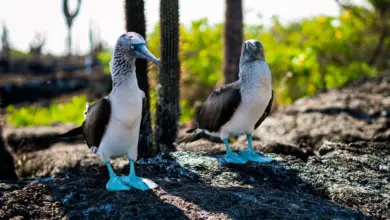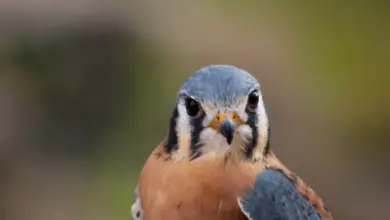Ovambo or Ovambo Sparrowhawks
The Ovambo or Ovampo Sparrowhawks (Accipiter ovampensis) are African birds of prey that are widely distributed across sub-Saharan Africa. Within their range they are mostly resident; however, evidence suggests that they are seasonally migratory in some areas in response to rainfall changes.
Global Names
Chinese: ????? … Czech: krahujec ovampský … German: Ovambosperber … Danish: Ovampospurvehøg … Dutch: Ovambo-sperwer … Finnish: savannilintuhaukka … French: Épervier des Ovampos … Italian: Sparviero di Ovampo … Japanese: sabannahaitaka … Norwegian: Ovambohauk … Polish: krogulec szary … Portuguese: Gavião do Ovambo … Slovak: jastrab ovambský … Spanish: Gavilán del Ovampo … Swedish: Ovambohök
Distribution / Range
The Ovambo Sparrowhawks a native to the following African countries:
Angola (uncommon), Benin (uncommon), Botswana (fairly common resident, except the southwestern areas), Burundi (uncommon), Cameroon (rare), Chad (uncommon), Democratic Republic of the Congo, Ivory Coast (uncommon migrant, possibly breeding), Ethiopia (rare), Ghana (rare migrant, observed between July to December), Guinea (rare), Kenya, Malawi (likely breeding residents, but scarcely distributed), Mali (rare), Mozambique, Namibia, Nigeria (uncommon migrant between July to November, mainly occurs in the Guinea savannas, but also south to Ibadan and north to Kano), Rwanda, Senegal, (northern) South Africa(Scarce or rare resident), Swaziland, Tanzania, Togo (generally uncommon; mostly found in savanna areas), Uganda (Intra-African migrant), Zambia (resident breeder – present in all months), Zimbabwe (appears to be most common on the central plateau; also occurs in the eastern highlands and on the seaward-facing slopes of the mountains, as well as major river valleys and in the southeast lowveld)
They are rare vagrants to:
Central African Republic; Senegal; Swaziland
Migration:
Resident breeder in most of its range. Generally resident in the southern portions of its range in southern Africa; migratory only to western and eastern Africa.
Habitat:
They mostly live in dry woodlands and, in some areas, exotic tree plantations. They move into surrounding open areas of savanna and grassland for hunting.

Description
The Ovambo Sparrowhawks measure between 12 – 16 inches (~30 – 40 cm). They have a wingspan of 24 – 30 inches (60 – 75 cm). The females weigh between 6 – 11 oz (180 – 305 g); the males weigh between 4 – 7 oz (105 – 190 g).
Ovampo Sparrowhawks have long, pointed wings and short legs – more resembling a small falcon than a sparrowhawk. The head is small; the eyes are dark red – almost black, the beak is black, the tail is squared; the toes are long. The cere (skin above the upper bill) and the legs are orange-red in color.
Two color morphs (mutations) have been identified:
- Grey morph (described above) – most common – The adult male has a grey upper plumage. The plumage below (including the throat and thighs) is barred. There are bands on the tail and wings. White spots can be seen on the central parts of the tail feathers.
- Dark / Reddish-brown (melanistic) morph – very rare. The plumage is mostly blackish-brown, although the tail and underwing patterns are the same as those seen in the grey morph.
Female ID: The female is much larger than the male and her upper plumage is browner.
Juveniles:
Immature birds have a brown upper plumage. The plumage below is either reddish-brown (dark morph) or streaked and barred with white (grey morph). The pale head has contrasting dark cheeks. The eyes are dark brown. The cere and legs are pale orange. The bands on the tail and wings are slimmer. There is a pale, conspicuous stripe above each eye.
Similar Species:
Resembles the Gabar Goshawk (Melierax gabar) – which can be identified by its white rump, grey chest, red legs, larger head, and different tail pattern.
The dark morph juvenile Ovampo Sparrowhawks could be confused with the Rufous-chested Sparrowhawk (Accipiter rufiventris) – which can be identified by its dark eyes, orange-colored cere and legs, and more prominent eyebrow stripes.
Breeding / Reproduction
Ovambo Sparrowhawks are monogamous and pairs are usually solitary. Prior to nesting, the pair is usually observed in a courtship display that consists of both soaring and circling together, while calling to each other.
Both the male and female participate in the nest construction. The nest consists of a stick platform lined with twigs, bark chips, and leaves. The nest is typically placed high in a tall tree.
Nesting usually occurs from August through January. In Kenya, breeding activity has been recorded as early as May.
The average nest contains 3 – 4 eggs (sometimes only 2 or as many as 5). The female alone incubates the eggs for about 33 – 39 days. The male feeds the nesting female two–three times a day.
After hatching, the male feeds the chicks for about 18 days while the female broods and protects the young. After that time, the females also participated in hunting.
The young fledge (leave the nest) when they are 33 – 39 days old, but won’t be completely independent for about another month.
Diet / Feeding
The Ovampo Sparrowhawks mostly feed on small birds, with the female taking larger prey than the smaller-sized male. They hunt birds, such as cuckoos (Cuculidae), swifts (Apodidae), kingfishers (Coraciiformes), mousebirds (Coliidae), bee-eaters (Meropidae), wood-hoopoes (Pheoniculidae), swallows (Hirundinidae), drongos (Dicruridae), weavers and widows (Ploceidae), doves, flycatchers and robin-chats (Muscicapidae). To a lesser extent, they may also eat flying insects.
They hunt their prey in flight by capturing them after fast pursuits, or from an exposed or concealed perch.
Ovambo Sparrowhawks are being preyed upon by Black Sparrowhawks (Accipiter melanoleucus).
Calls / Vocalizations
Their calls are described as high, repeated keep.



